Are you considering starting a craft business? Let me help you decide if a craft business is for you! I’ll share the basic first questions you should ask yourself, as well as critical first steps for success.
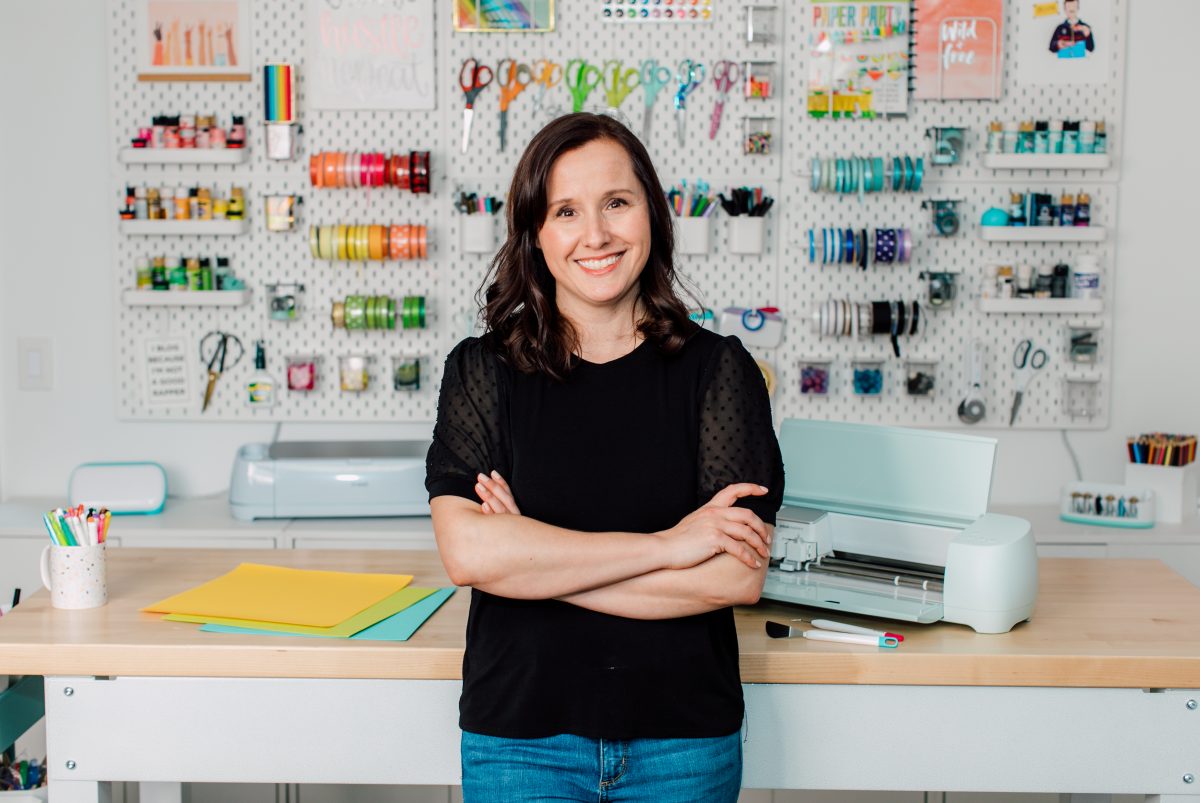
If you’ve ever considered turning your hobby into a profitable craft business, then this is for you. Today, I’m sharing craft business tips and questions you’ll want to consider before starting or growing your business.
This post is a summary of a recent YouTube Live and podcast I did with Angie Holden! You can watch the video by clicking play below, or you can find the podcast on many of your favorite podcast players. There’s so much more than what I cover here in the video and podcast, so if you have the time, give them a shot!
Before You Begin
First things first. You’ll want to ask yourself whether you really want to sell your crafts. Turning a hobby into a business can be both a blessing and a curse.
Personally, I don’t craft for fun as much as I used to. If I craft, then it is primarily for my business. I’m filming it. I’m doing an Instagram story with it. I am thinking about YouTube. I’m thinking about how I can work this into my business the entire time. So, it takes a little bit of the joy out of the hobby for me.
Even if I am crafting for personal use, I still feel like I should film it so I can make a YouTube or an Instagram reel. For example, if I’m making a shirt for my boys for a school holiday, I’ll also make sure to grab pictures of it, as well as document the process.
Overall, it’s taken some of the joy out of crafting and you have to be willing to sacrifice a bit of that for your business.
Separating Your Work from Life
Next up, you’ll want to think about what will your workspace look like.
Starting a business from home can be tricky. Your business will likely invade your home space, which can blur the lines between business and pleasure. For me, home is where I have my downtime.
However, if work is staring you in the face the entire time you’re at home, it gets a little bit more difficult to get some downtime. To create that separation, you’ll need to put some measures in place. You may have to designate a workspace. Set work hours. In my previous house, I worked from a bedroom and I could close the door.
In my current house, I have a much bigger separation and it has become so much easier for me to be this is “work Cori”, and this is “at home Cori”. It makes it easier to turn off the work part of my brain when I’m in the house. I do have to be cognizant of it, though.
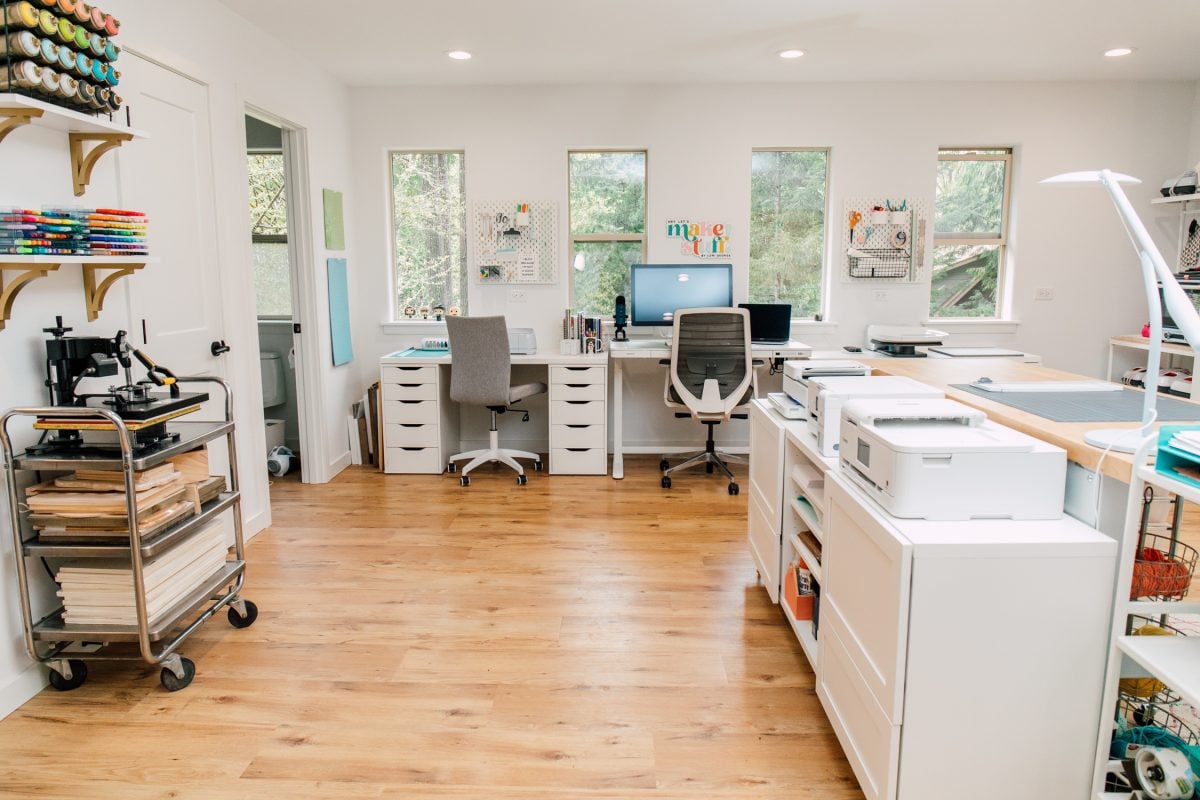
Stop Overthinking It
I get it. I’m a classic overthinker. Taking a big step is really hard, but thinking about it is easy.
In that case, it’s easy to get completely overwhelmed. In The Next Right Thing the author talks about taking just the next step in the right direction. That way, you don’t have to think about every single thing. Just do the next right thing.
There will be days where you have more time set aside so you can actually take a really big bite out of a project or task. Other days, you’ll only have space for a small step. I really like thinking about it this way as opposed to sort of thinking about it as one huge overwhelming thing.
Building off of that, consider making progress over obtaining perfection. If you wait so long that your business is going to be perfect or that Instagram you want to start is going to be perfect, you may never start. If you hesitate, you don’t make any progress. Just starting is better than not starting at all.
If you take a look back at my YouTube channel or blog, you’ll see just how much things have changed. Often you do the best you can with what you have in the moment. You can spend forever researching a platform or a tool, but sometimes you just need to make a decision knowing you can always change it.
Almost everything I used for my blog 10 years ago is completely obsolete now. Things change, things morph, industries grow. Accept that you aren’t necessarily locked into your choices forever, but it’s the right choice for right now.
Rather than starting huge and getting overwhelmed and ultimately discouraged, start where you are. Start with what feels comfortable right now.
Deciding What Products to Sell
Deciding what to sell can be a tough one! So I have a few areas you should consider as you go along.
What do you love?
My biggest piece of advice would be to sell something you are passionate about. You don’t want to make mug rugs if you would never use a mug rug a day in your life. You want to make something that excites you—especially if you’ll be making a lot of them in the future.
You’ll also want to consider whether this is something you can you make over and over again? Personally, making the same thing day in and day out would bore me to tears. But, for others they like the repetition!
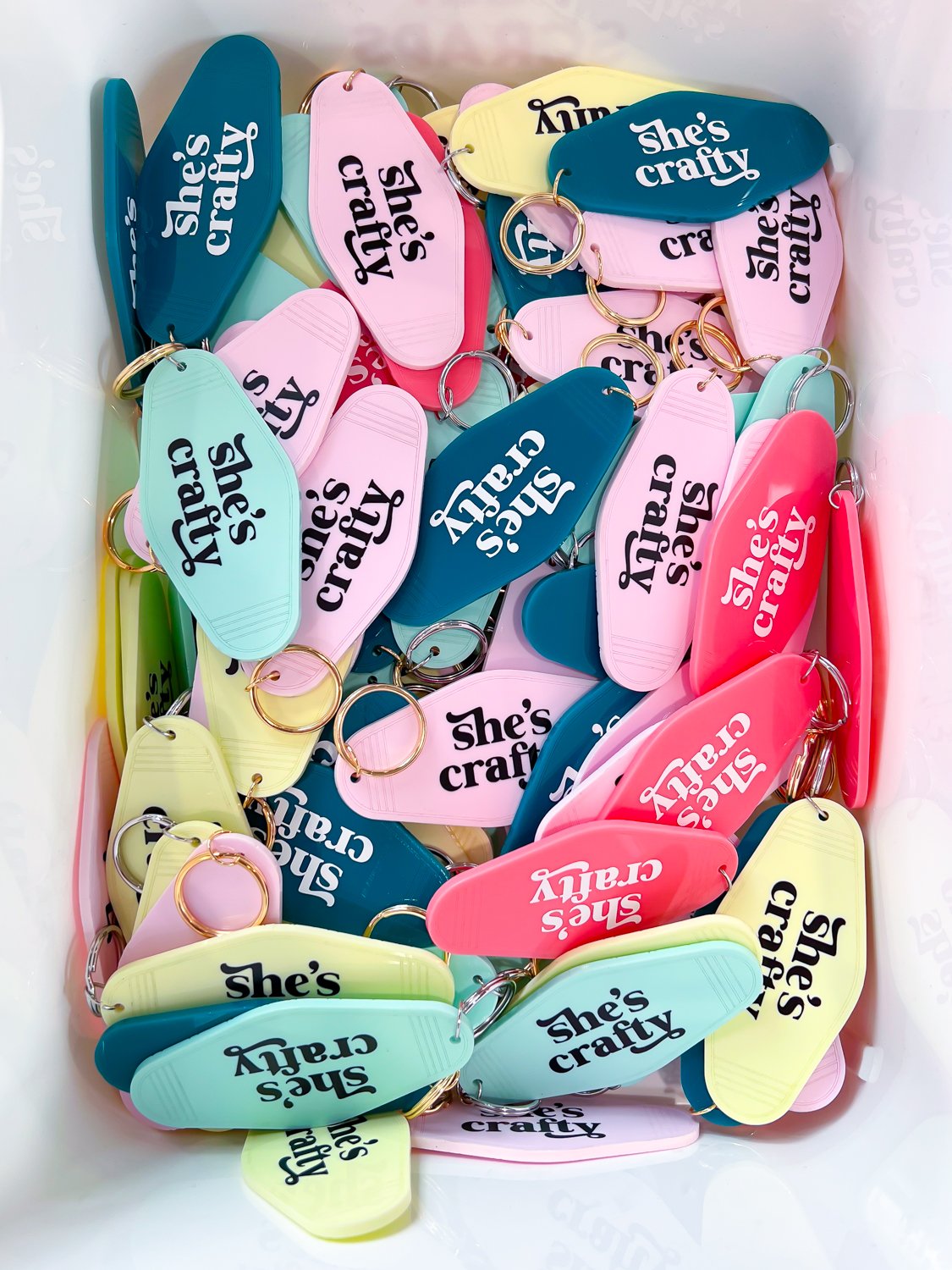
What is your niche?
If you’ve ever attended Crafting for Profit Camp, you’ve probably heard me talk about niching down. You may enjoy making a bunch of different things. That’s okay! However, making too many different products can mean your customers don’t know what to expect from you and you won’t be able to perfect your products.
There are actually two ways to niche down. Let’s look at both.
You can niche down by product type. So you can niche down by drinkware, for example, and just make tumblers and mugs. This, however, brings you back to that same problem where you have to make the same thing over and over again.
You can also niche down by theme. If you want to make something by theme, you can probably be much more broad in what you’re actually making. So, if you decide to make products for pet parents, you can make bandanas and dog dishes and tags and little dog shirts, but they all relate to the same customer.
So in this example, a customer might come to you for a dog shirt. And then they may see that you have dog tags and also purchase from you. It could be basically any theme, but you really want to focus on a specific customer. So, you’re not making dog shirts, true crime tumblers, hand sewn pillows, and clay earrings. While those things are great, it’s hard to find one person who wants all of those items!
Who is your target customer?
Let’s go into that customer profile a bit more when it comes to deciding what to sell.
Think about your ideal buyer. What makes them unique? What do they buy? What stores do they shop at? What websites are they on? What social media do they like? What is their annual income? What is their disposable income? Where do they live?
Then give this “avatar” a name. When I’m writing, selling, or creating anything, I have this avatar in my head and I’m always talking right to them. This includes product listings, social media posts, emails, and more.
Don’t be afraid to let your customer avatar shift a little bit as you kind of learn more about your business. I really want my customer avatar to be younger than she actually is. In my head, I still think I’m creating for somebody younger and I have to remind myself that I’m getting older. And so, my customer avatar is also getting older with me.
Can you perfect your product?
Don’t start selling until you have a perfect product.
You’d be surprised how often I see people in our Facebook group mention that they got a sublimation printer yesterday and now have an order for 20 tumblers. That terrifies me! First things first. Take a step back and make sure you have a perfect product. This may mean you have to toss a blank or two (or ten) if you mess up.
You want to give your customers a perfect product because the number one way you’re going to start to get more business in the beginning is through referrals. If you’re not putting out a perfect product, you’re not going to get those referrals. Really working on your product to make it your own and to make it really special is a way to set yourself apart from the crowd.

I even recommend doing a test shipment if you’re going to ship your product. So, put it in a box, package it, and send it to someone you know. Then have them film the unboxing. You may be shocked at what some of those packages go through. You want to make sure that it arrives to your customer in the same condition you put it into that box.
Deciding Where to Sell
Your two main options are going to be online or in person. Personally, I think in-person selling is a better place to start your small craft business because you can gauge people’s reactions when they see your products. You can see what they’re picking up, what they’re not picking up, and how they react.
Using online storefront such as Etsy, you don’t have that insight. You may have some analytics, but you don’t really know what people are really drawn to and what they’re not drawn to. You can’t talk to people about your products. It’s just a little bit more impersonal.
For a lot of people, starting out at a small craft show or selling in a Facebook group is the best way to begin. It’s way less overwhelming.
Start a Facebook group and invite your family and friends. Encourage them to invite others. Sell on Facebook Marketplace or go to a craft fair. Starting small gives you all those personal insights. Then, when you’re ready, add in an online platform such as Etsy.
Creating a Cohesive Brand
Okay, this is one of those things where you can get very overwhelmed. Start small and I promise it’ll all be okay!
Branding is actually one of the best ways to set your business apart from other small craft businesses. I think that’s because we are such a visual people. Nobody is going to look at something unless it’s pretty. That’s just how it is these days.
I have a lot of resources for creating a cohesive brand, including my course Crafting Your Signature Style. There’s a lot to think about but here are a few small places to start.
Choose a Unique Name
First and foremost, find a name and make sure that name’s not taken by someone else. If I’m thinking about a name for something new, I Google it, see if anyone else is using it, what comes up in the Google search results. You want to make sure that it’s not being used and that it doesn’t have any negative connotations.
Be sure to go ahead and claim that name on Instagram, Facebook, big social media sites, etc. Even if you don’t plan to use them right then, claim them so no one else can. I would also recommend claiming the URL regardless if you’re going to use it or not, because you’ll probably want to use it in the future.
Choose a Color Story
Then choose your color story. This should be a range of colors that you’ll use in your logo and other branding AND in your products. If you go to my Instagram, you’ll see that I use the same colors over and over again. I may put in a pop of other colors I don’t use as often (purple and orange, for example), but generally I stick to my brand colors. This gives you a very cohesive feel to everything you do.
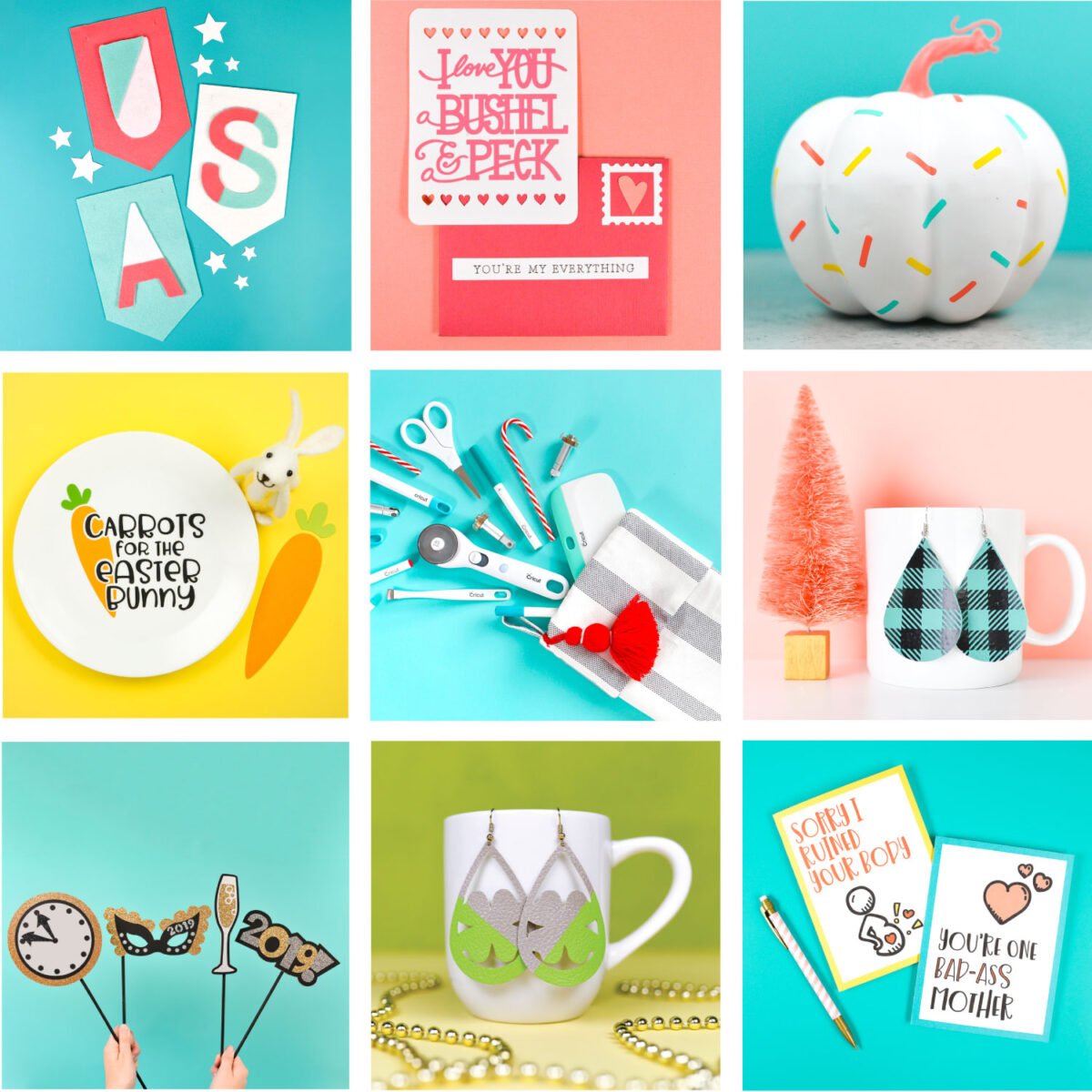
Make sure your colors have some variety. You’ll want to be able to craft using your colors and you don’t want to be so limited that it’s difficult. For years I didn’t have any pinks in my color palette and it made Valentine’s Day pretty difficult, for example. Choose between 5 and 10 colors. You do not need to use all of the colors in your logo, but having a nice selection of colors that you stick to will help your overall branding look cohesive.
Practice Your Photography and Editing
You probably have a good camera already in your pocket. Consider taking a small phone photography course to get familiar with how your camera works. Again, we’re looking for consistency across your photos, with similar styling and lighting.
You’ll most likely want to get some easy backdrops as well. Truly almost everything I shoot is with a piece of foam core. Take your photo and then edit with a dark phone screen in mind. Brighten your photo and then brighten some more. When you think it’s too bright, maybe brighten it a little bit more because people are mostly looking at your photos on that darkened phone screen.
If you’re looking for a good editing app, Adobe Lightroom is a free app on your phone, and it is incredibly robust. One of the things I really love about Adobe Lightroom is that you can edit one photo and then select all your photos, and sync those edits to all your other photos, meaning that you don’t have to edit each one individually.
Building an Email List
While most people want to jump right into all the social media platforms, I suggest you do something else instead. Start an email list! If you started a business, you NEED an email list.
You need an email list because it is not subject to an algorithm. Instagram, Facebook, and TikTok decide who gets to see your content. But when you send an email, it’s going to be delivered. Yes they have to open it, but it’s there. In this day and age, being able to get directly in front of somebody because they chose to be there is really big.
You can email people about new sales, new products, behind the scenes, etc. Just be consistent. Whether you’re emailing once a week or once a month, get people used to seeing your name in their inbox.
There are services like MailChimp that are free for a certain amount of email addresses, so it’s a great place to start. Start with something like MailChimp and then move to a different provider that offers more features later on, if you need to.
Getting Your Finances in Order
First and foremost, I have to state that I am not a tax professional. I am not a CPA. I am not a lawyer. I don’t have the answer for every person, every state, every county. Everywhere is different.
That’s really annoying, because it would be nice to say, this is the type of business you should open and here is what you need to do. However, it’s just not possible. My first piece of advice is to contact your local small business administration, women’s business administration, a CPA, and/or a business lawyer. They can really help you get your finances in order and help you learn more about business classifications and how to collect sales tax.

Overall, you just want to make sure you’re keeping your business finances separate from your personal finances and that you’re obeying all licensing laws and regulations. There’s a lot that goes into this, but a professional can help!
Being Productive
Finally, let’s talk productivity once your craft business is up and running. If you’re starting a craft business, there’s a chance you may work another job in addition or have other priorities. You’ll need to do what works best for you since you’ll likely be carving time into an already packed schedule.
Limit Distractions
We live in such a distraction filled world and I have to say that like my four biggest distractions live in my house—my husband, my two boys, and my dog. I love all of them dearly, but when I’m working they can really be a distraction. So, I’ve had to work really hard with my husband to set boundaries. Our brains can only do so much!
I know that’s very hard and I’m very privileged to be able to have my parents living down the street and that I work on this business full time and my husband stays home. I’m very privileged in the fact that it’s very easy for me now to carve out that time. But when I had two infants, it was much, much more difficult.
Remember not to compare yourself to others. I have friends who have grown kids and have more time in their days. I have friends with younger kids or other circumstances. We are all just working with what works for us.

Find Your Peak Hours
Next, when you are carving out your time, think about when you’re the freshest.
I am never good working late at night. When I was also working at my marketing job full time, I often got up at 4:30 in the morning because that was easier for me than staying up late. I still do my best work in the mornings, though often I don’t have to get up so early. By the time the afternoon rolls around, I’m done.
Break Up Tasks by Mental Load
Finally, break up your tasks by how much mental load they may take. Here’s how I do this.
I write out basically everything I have to do into this big brain dump document. Then I go through and break each bigger task into “one-sitting tasks” meaning that I can get the task done in an hour or less all in one go.
Then I prioritize by how much brain space each of my tasks is going to take. So, I have things that take a lot of brain space, things that take some brain space, and things I can do pretty easily.
Then I color code the tasks using random colors. This is important—don’t use green, yellow and red for easy, medium, and hard. The signals in our brain will automatically say STOP to the hard stuff if it’s red!
So I picked three random colors. My hard stuff is teal, my medium stuff is pink, and my easy stuff is yellow. This way, it’s easy for me to look at the list and think about my own brain capacity at any given moment. Do I have 15 minutes before I need to head off to an appointment? I’m looking for an easy yellow task. Or do I have several hours set aside? Then I might tackle some teal tasks. Do what works for you!
Whew! We covered a lot in our video and podcast—way more than I even have here!
While this list may not cover everything YOU need to consider for YOUR small business, I do think we’ve covered the basics. Remember, your small business journey will look different than others, and that’s okay! Start where you are and keep taking the next steps.
If you want even more small business resources, be sure to tune into our next episode of Crafting for Profit Live!
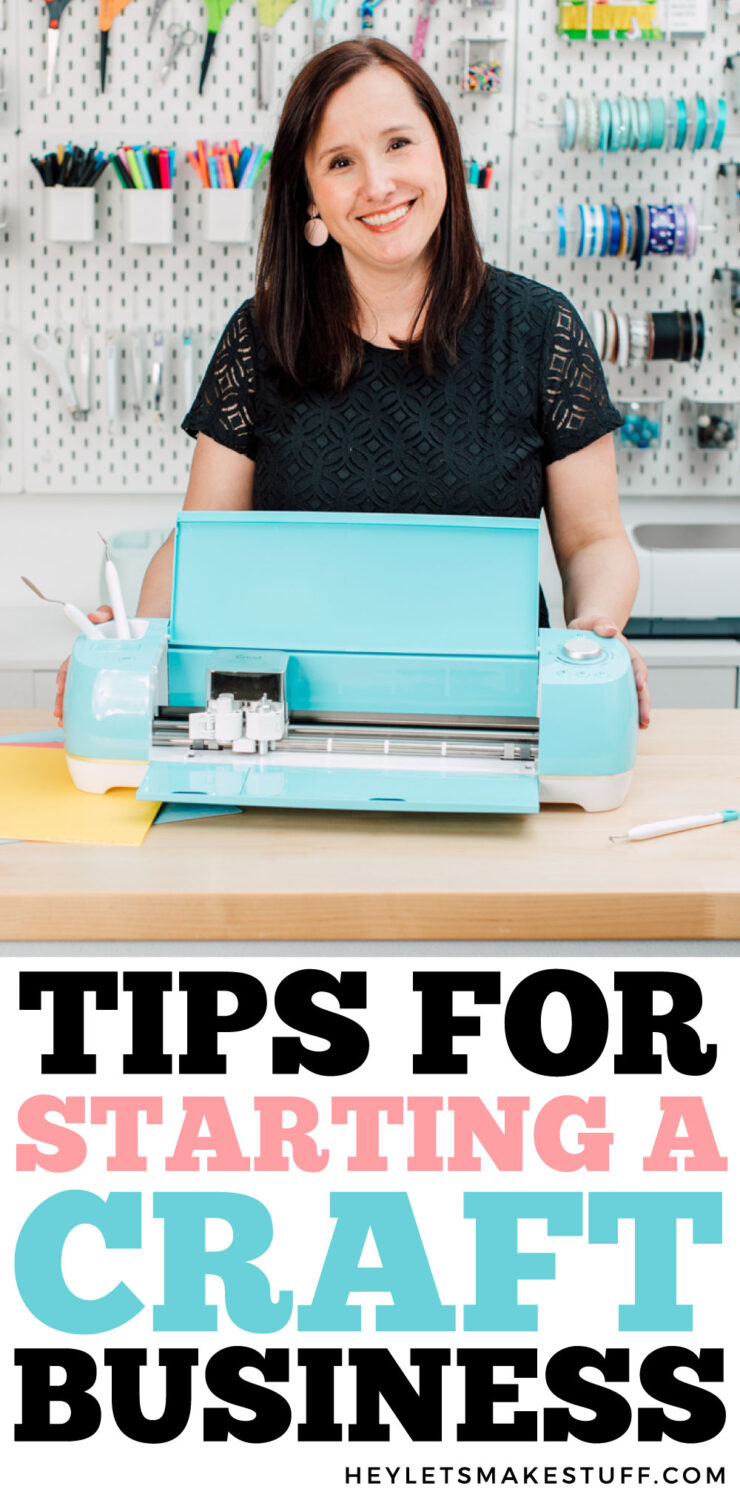



Leave A Reply!